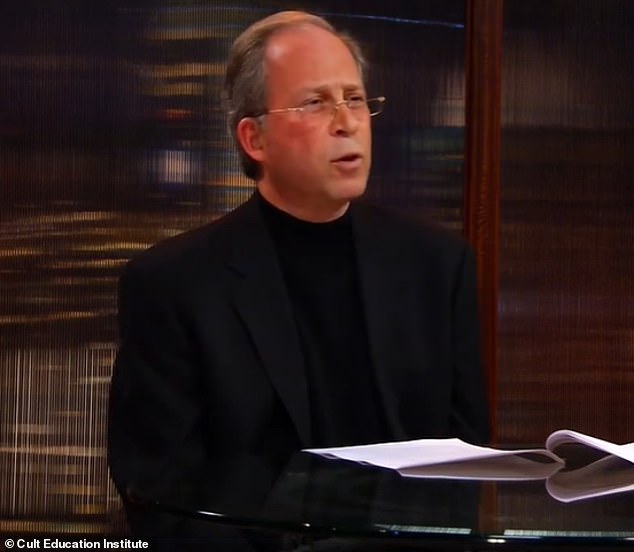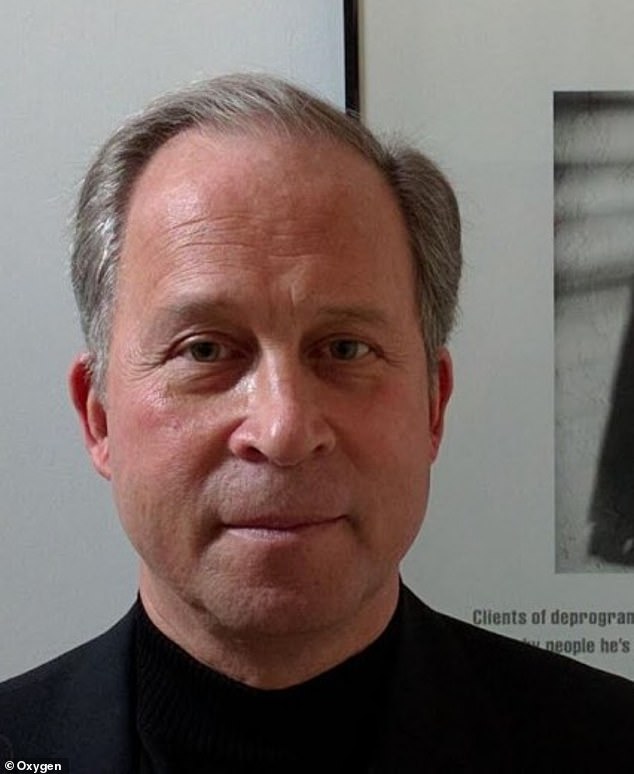Table of Contents
A man who works as a “cult deprogrammer” has exposed the gruesome realities of his job – from dealing with “paedophiles” to constantly fearing for his life due to “threats” from powerful leaders.
In the 1980s, Rick Alan Ross, 71, of Ohio, was horrified to discover that the nursing home his grandmother lived in had been “infiltrated by an extreme religious group that targeted the elderly.”
After working with the facility’s director to “expose” corrupt employees, a fierce passion was awakened in him to want to help other victims.
Since then, Rick has dedicated his life to helping cult members break free from their cults by performing “cult interventions” and over the past four decades has helped over 500 victims.
He has worked alongside law enforcement on some of the most infamous cases and has been called to the stand to testify in trials against powerful cult leaders and sadistic pedophiles.
Cult deprogrammer Rick Alan Ross, 71, has shared the four steps he takes to help victims realize they have been “brainwashed”.
He helped put NXIVM founder Keith Raniere behind bars and was “consulted” by the FBI before the 1993 Waco “showdown” because he was the only “cult expert” who had “deprogrammed” its members in the past.
Now, he has given DailyMail.com a fascinating look inside his work, revealing how he helps even the most brainwashed victims return to their families.
And while helping cult victims cut their ties to horrible cults is certainly rewarding, he has also spoken out about some of the downsides of the profession, such as being “harassed” by cult leaders.
In fact, Rick told DailyMail.com that his “life has been threatened several times” and that he has had to receive government protection.
But that hasn’t derailed him in his quest to help victims of cults.
‘I have testified in criminal trials, in child custody cases. “I’ve worked with law enforcement,” he shared. “And I’ve launched the largest online database of cult information.”
But most importantly, he has performed over 500 successful “cult interventions” across the United States.
So how do they work? Well, first, Rick explained that he was approached by families who believed a loved one had joined a cult.

And while helping cult victims cut their ties to horrible cults is certainly rewarding, he also talked about some of the downsides of the profession, such as being “harassed” by cult leaders.

Rick helped put NXIVM founder Keith Raniere (seen) behind bars and was “consulted” by the FBI before the 1993 Waco “showdown.”
Cult deprogramming interventions in recent days
He said they needed to have “some level of communication with the family member involved in the cult” before they could make an intervention.
“It came as a complete surprise. Just like a drug or alcohol intervention, the person doesn’t know that the family is going to perform an intervention,” he explained.
‘At first they may be surprised and angry that the family has done this.
But you never tell the person in advance because they would probably contact group members who would try to sabotage the intervention or tell them they shouldn’t attend or insist that a cult member be present for the intervention.
“You want it as a surprise so you can talk to them separately from the group and have the opportunity to present information so the family can express their concerns.”
Rick said the interventions involved him and family members speaking with victims “eight hours a day” for about three or four days, which added up to about “24 to 32 hours of work.”
He said there were “four blocks of discussion” during the intervention, and the first was “defining a destructive sect.”
He explained that there were “three core characteristics” that turned a group into a cult, and he broke down each of them based on the victim.
“The first is that there is a leader with absolute authority who becomes an object of worship,” he explained.
‘Everything you say is right has to be right and everything you say is wrong has to be wrong. He makes decisions for the group.
“Second, the leader or group uses identifiable coercive persuasion techniques to gain undue influence over people in the group.”
The last characteristic is that the group causes some type of “damage” to its members, which can vary.
“That usually means that people act against their own interests, but instead for the benefit of the leader or the group,” he continued.
‘Or it could mean that the group is micromanaging people’s lives to their detriment, distancing them from family or friends.

Rick said there were “four blocks of discussion” during a cult intervention: The first is defining what a destructive cult is for the victim.
“And it can lead to physical abuse, criminal activity or even death, depending on the group.”
After Rick defines what a cult is for the victim, he moves on to the second phase: “examining persuasive coercive techniques.”
‘So I ask the question: does the group use these techniques? Do they deliberately and consciously tear people down? he explained.
‘Do they manipulate them in that broken state to change their mentality and way of thinking?
‘And do you try to lock them into that changed state of mind through peer reinforcement, information control, or environmental control?’
The third block of discussion involves sharing information about the group or its leader that members may not know.
“I will have an investigative file and share any information I have accumulated (about the group),” he told DailyMail.com.
‘For example, has the group leader been sued or involved in any type of criminal activity? What does the public record show?
‘Have there been complaints or litigation against the group? What don’t you know about this group or leader that you should know to make a more informed decision?
Last but not least, Rick said he gave the family the opportunity to explain to the victim why they decided to do the intervention.
“At the end of those four blocks, that person will decide what they want to do,” he added.
“They may decide that they want to continue with the group, or they may decide to take a break, or in most cases, they will decide to end their participation.”
He said his success rate was around 70 percent.

He then examines coercive persuasive techniques and asks: Does the group use these techniques?

Then share information about the group or its leader that members may not know and give family members a chance to explain why they decided to do the intervention.
‘My life is threatened,’ says cult expert
While reflecting on his decades-long career, Rick admitted that he had worked some extremely “dangerous” cases.
“I dealt with a group that encouraged members who had diabetes to not use insulin or see their doctors and instead meditate as a cure,” he shared.
‘I performed an intervention in Europe on a young father and he was hospitalized three times, he almost died.
‘His family was deeply distraught. It was very important that we succeeded or he could have died, but we did. The consequences can be very serious.”
He also recalled an occasion when he helped a 14-year-old boy who had been “sexually exploited” by a “pedophile.”
His own life has been in danger during his work, as he revealed: ‘My life has been threatened several times.
‘I have been harassed by private investigators. They sued me five times but they were all dismissed. In all of them I prevailed.”
When asked what advice he had for parents, he said moms and dads should always be aware of what their children are doing online, as lately most cult leaders were luring people through social networks.
As for what you should do if you ever think a loved one has become involved with a cult, he said you should never respond with anger.
“My advice is not to be confrontational or make statements like, ‘That’s a cult,'” he recommended.
‘Research, read and understand how cults operate before deciding how to respond.
‘During that time, maintain communication and make a real effort to maintain your relationship with that person.
“Don’t reject them, listen to them and try to understand what exactly they are involved in.”

